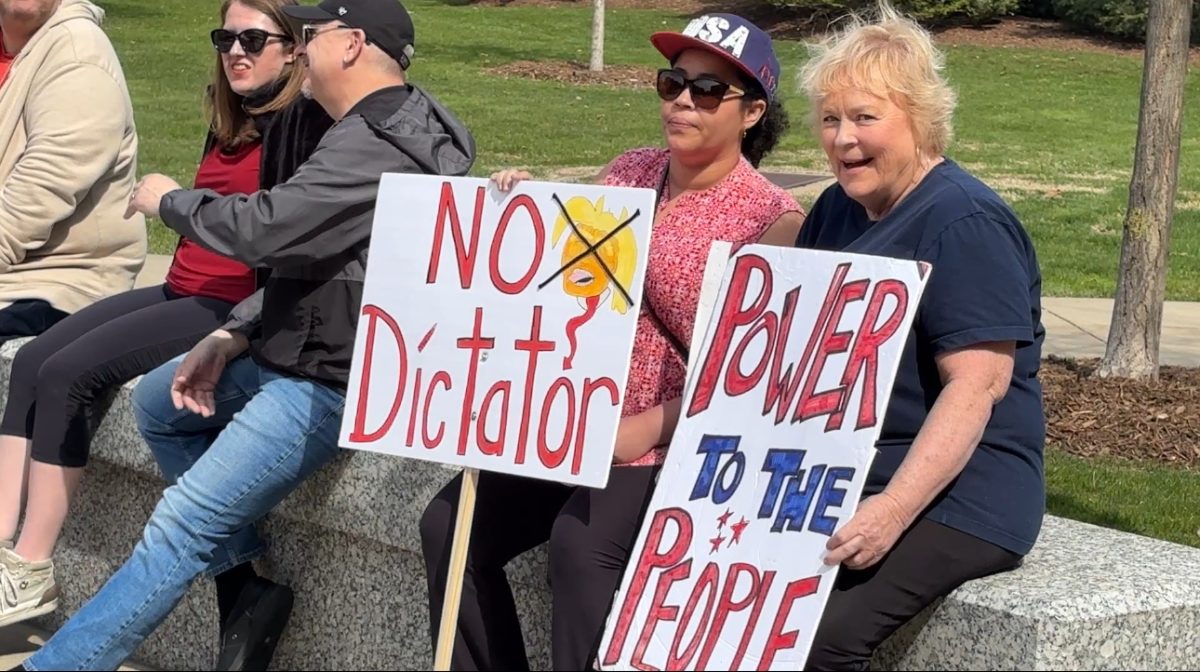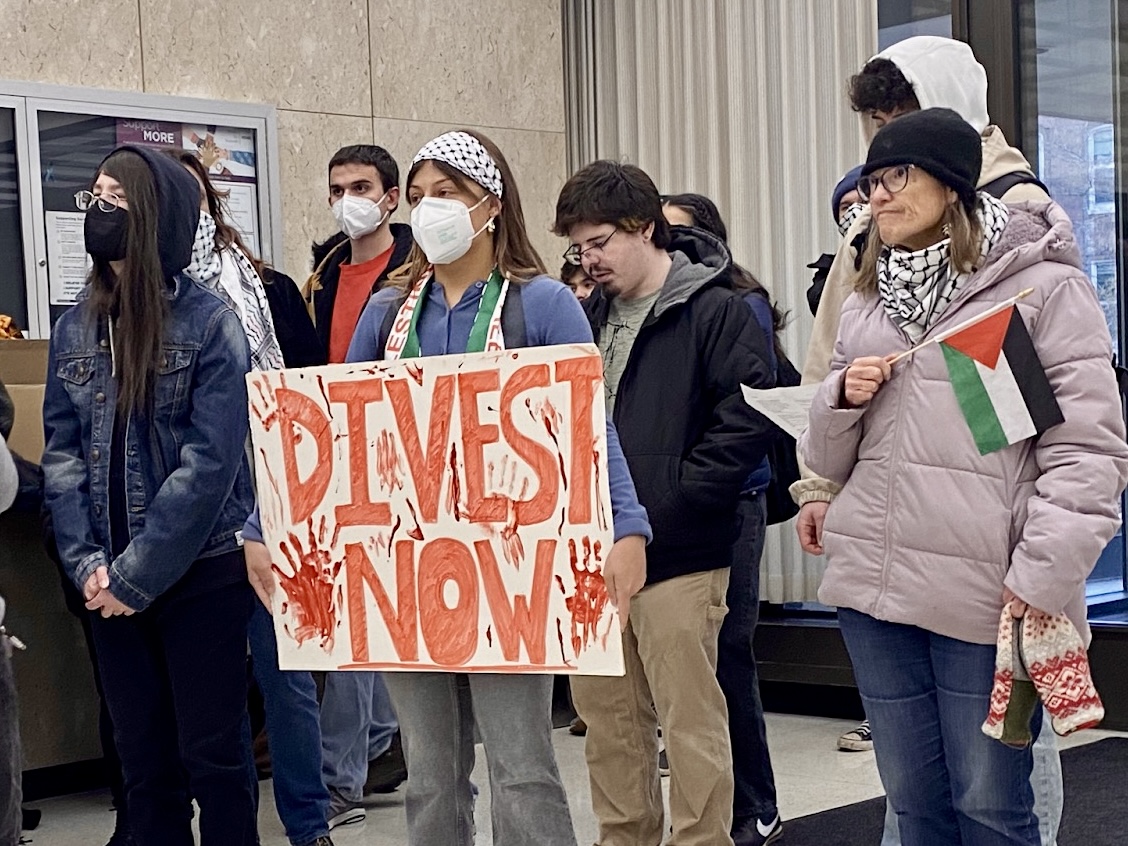Funding for academic research initiatives throughout the US has been stopped as a result of the Trump administration’s anti-DEI executive order, threatening scientific coverage and public health. Students, research assistants and professors at Michigan State University, along with those at colleges nationwide, are facing uncertainty as grants and programs are being halted on account of not aligning with the current priorities of the administration.
DEI, or diversity, equity and inclusion in academic research refers to efforts aimed at promoting a research environment that values diverse perspectives, ensures fair access and opportunities for all individuals, and fosters an inclusive culture where everyone, regardless of background, can contribute and thrive. DEI practices can help support minority communities that have historically suffered from health issues due to economic disparities by including those populations in research as well as providing a pipeline for people in those communities to contribute to research and provide new perspectives.
Discontinuing DEI policies can lead to underrepresentation in both scientific populations and research workplaces.
Robin Miller, a psychology professor at MSU and associate director of the department’s masters training program, felt strongly about including underrepresented groups in research.
“Diseases are not equally distributed across the population,” Miller said. “So whether you’re talking about internationally or domestically, certain groups of people are more vulnerable to certain kinds of diseases. And studying that is critically important: studying it so that we understand the causes of those kinds of disparities, we can prevent those particular kinds of diseases and that we can make sure that people have appropriate access to care. We see that in just about every disease I can think of.”
Studies at MSU that focus on groups relating to DEI, such as women and men that are affected by human immunodeficiency virus (HIV) are being stopped, which can lead to public health issues due to no representation of certain populations.
Miller’s work focuses on effective community-based HIV prevention services and access to HIV care. She said that the email she received informing her that her research would no longer be funded didn’t actually have any mention of new anti-DEI policies, but that her research does not align with the current priorities of the administration.
“We’re already seeing excess deaths and infections, and this could set back 25 years of progress in fighting the epidemic within just four years, according to UNA’s models,” Miller said. “We were on track to end the epidemic by 2030, but this is a huge setback. We’ve also stopped supporting work to combat diseases like tuberculosis, malaria, and Ebola. As countries face these public health crises, it destabilizes them and impacts us too. Health is a human right and essential for global progress and economic stability, which is why this is an emergency.”
In the Revitalization Act of 1993 and additional amendments, the National Institute of Health (NIH) mandated the appropriate inclusion of minorities and women in all NIH-funded research and stated clearly that, “Since a primary aim of research is to provide scientific evidence leading to a change in health policy or standard of care, it is imperative to determine whether the intervention or therapy being studied affects women or men or members of minority groups and their subpopulations differently.”
Joseph Folger, a research assistant in the Department of Physiology at MSU explained why studies lacking diversity can pose serious risks for public health, using his research at MSU as an example.
“The majority of pain research has always involved male subjects and so you have issues where things will work on male subjects that will not work as well in female subjects, or not work as well in children,” Folger said. “You can have issues where people with different genetic backgrounds, because they come from different races, they will have different effects and are unable to receive the same kinds of care because they don’t show the same symptoms, because they don’t show the same responses, because they’re less likely to go to a doctor for whatever reason.”
Cassidy Martens, a student and research assistant at the University of Miami (UM), expressed concerns about changes she’s witnessed with her professor’s research. Her professor, Sari Izenwasser in the neuroscience department at UM, conducts research about substance abuse utilizing a rat model. Because of new anti-DEI policies, her study and many others are being re-evaluated, and as a result they concluded that she could no longer use females in her research.
“The inclusion of female mice and rats is being considered DEI,” Martens said. “They’re trying to make it so only studies with male mice can be published, which is going backwards in terms of scientific progress.”
Some research is being targeted in other ways. Robin Miller talked about her worries regarding some illegal requests having to do with academic research by the federal government.
“I have colleagues who have received emails asking them to change the measures that they’re using in studies that are already in the field and telling them they can’t ask certain kinds of questions, which, of course, is not legal for them to do,” Miller said. “And the kinds of questions that they have been told they can’t ask anymore are questions that have to do with a person’s gender.”
In addition to concerns about ending diversity in research populations, there’s a fear among many students and recent graduates that they will have a harder time finding jobs after they graduate.
Martens said that she applied for the prestigious postbaccalaureate Intramural Research program with the NIH, and after two rounds of interviews (one of them being six hours long), she was sent an email on Feb. 5 by the NIH saying that they are pausing interviews for all post-bac positions and that they are unable to continue interviews or make offers.
Alexandra Guarez, a recent graduate from the University of Loyola Chicago and a research assistant at MSU, said that she has seen her peers and superiors being heavily affected by the loss of funding and fears for her own future success in the field.
“By the time I would be looking into positions, I don’t know what’s gonna be out there for me,” Gaurez said. “Hopefully in the next four years, conditions in the job market and for graduate students are different.”
For current students, the impacts of anti-DEI policies will be seen in their exposure to different perspectives being narrowed.
“There’s a reduced diversity in terms of the people doing the research, which is a problem,” Folger said. “When we don’t have people from various backgrounds that have various experiences that have various points of view, you’re going to miss out on ideas that would have shaped experiments that you could have done.”
Research has shown that diversity on boards and in the workplace can increase innovation.
Brian Gulbransen, a professor in the department of Physiology studying the neural control of gut functions, said that one of his main concerns is that racially and ethnically diverse students will feel like there isn’t an equal opportunity for them in research positions.
“It’s important to have diverse people that trainees see as being present in the field that they could see themselves becoming a researcher in,” Gulbransen said.
“We used to always have summer students that were from DEI programs, and it looks like those have probably been cut. My most recent PhD student came through one of these DEI programs as an undergraduate and now is a post-doctorate at Mayo and is establishing an independent research career. So without something like that in place, she never would have had the opportunity to come in and develop a career in research in that way.”
With the recent wave of changes, many are struggling with knowing if certain actions will pass or not.
“It’s been very chaotic,” Miller said. “You know, you get some kind of email one day and then the next day the administration is walking it back or a federal judge issues an order saying they can’t do that.”
Because of the uncertainty around anti-DEI executive actions, it is unclear whether some research will be able to continue or not.
“Nobody really knows if the money that we have been basically contracted to get to do the research that we’re doing is actually going to show up, which makes it difficult to make plans and actually do research,” Folger said. “And the research we do is actually very important.”
The executive action calls for the discontinuation of DEI programs, mandates, policies, preferences and activities in the federal government while also requiring the review and revision of existing federal employment practices, union contracts and training policies or programs. Words such as “accessible,” “all-inclusive,” “barrier,” “bias,” “diverse,” “ethnicity,” “female,” “key groups,” “pregnant person,” “race,” “trauma” and many other words and phrases have been flagged by the federal government, leading to many academic studies that include these words to stop being funded.
The Trump administration contends that pro-DEI policies are at odds with merit-based hiring, leading to underperformance in the workspace. However, research has shown that companies with more diverse boards are more likely to outperform financially, a correlation that is significant to both gender and ethnicity.
In efforts to preserve their work, researchers will have to change how they get their funding.
“I think people are gonna have to look for other sources of funding to continue some of this research that they want to do,” Gulbransen said. “We’re going to have to get creative to figure out some other ways to do things. And I don’t think anybody really knows what the landscape of funding is at the moment, so it’s hard to predict what we should do and we don’t know what we need to do almost.”
Nationwide, people are protesting cuts to federal research funding. Miller, Gulbransen and Folger all mentioned the importance of contacting government representatives and expressing how people are being affected or if they’re not in support of these new orders. Multiple lawsuits have been filed challenging the executive orders and actions, which have halted some of them, but it remains to be seen what actions will be allowed under final court rulings.










